Inside the Barricades: UCLA
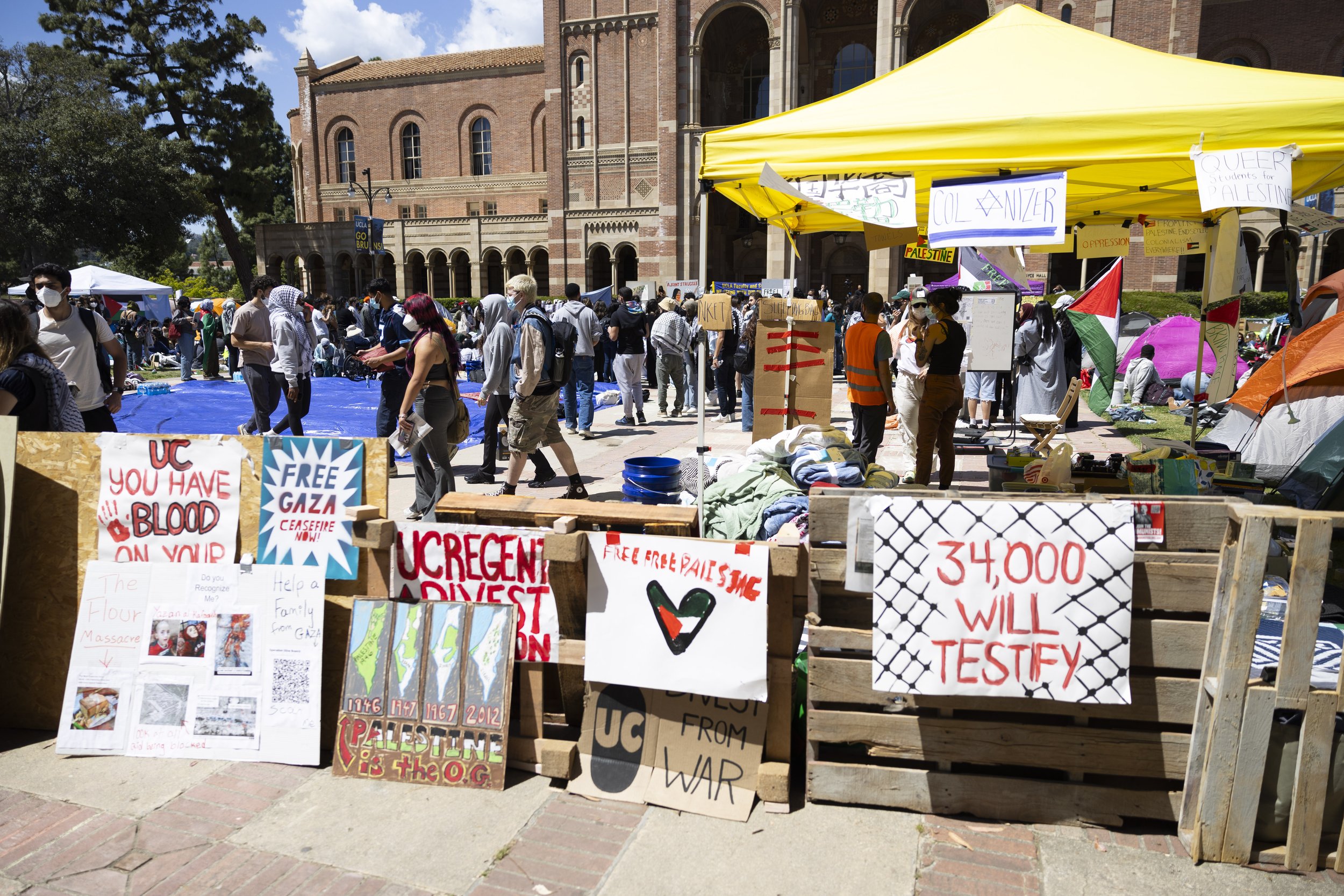

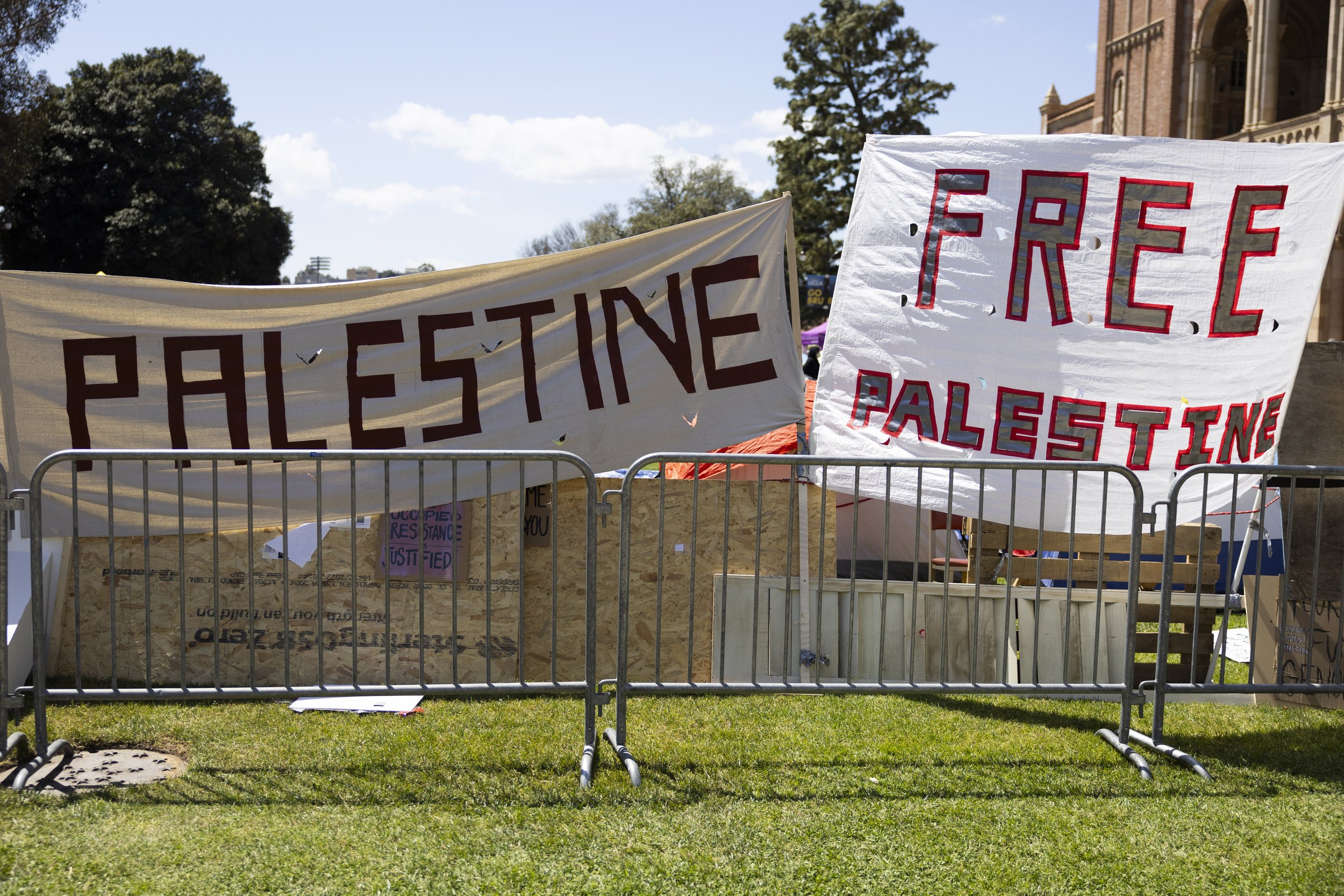
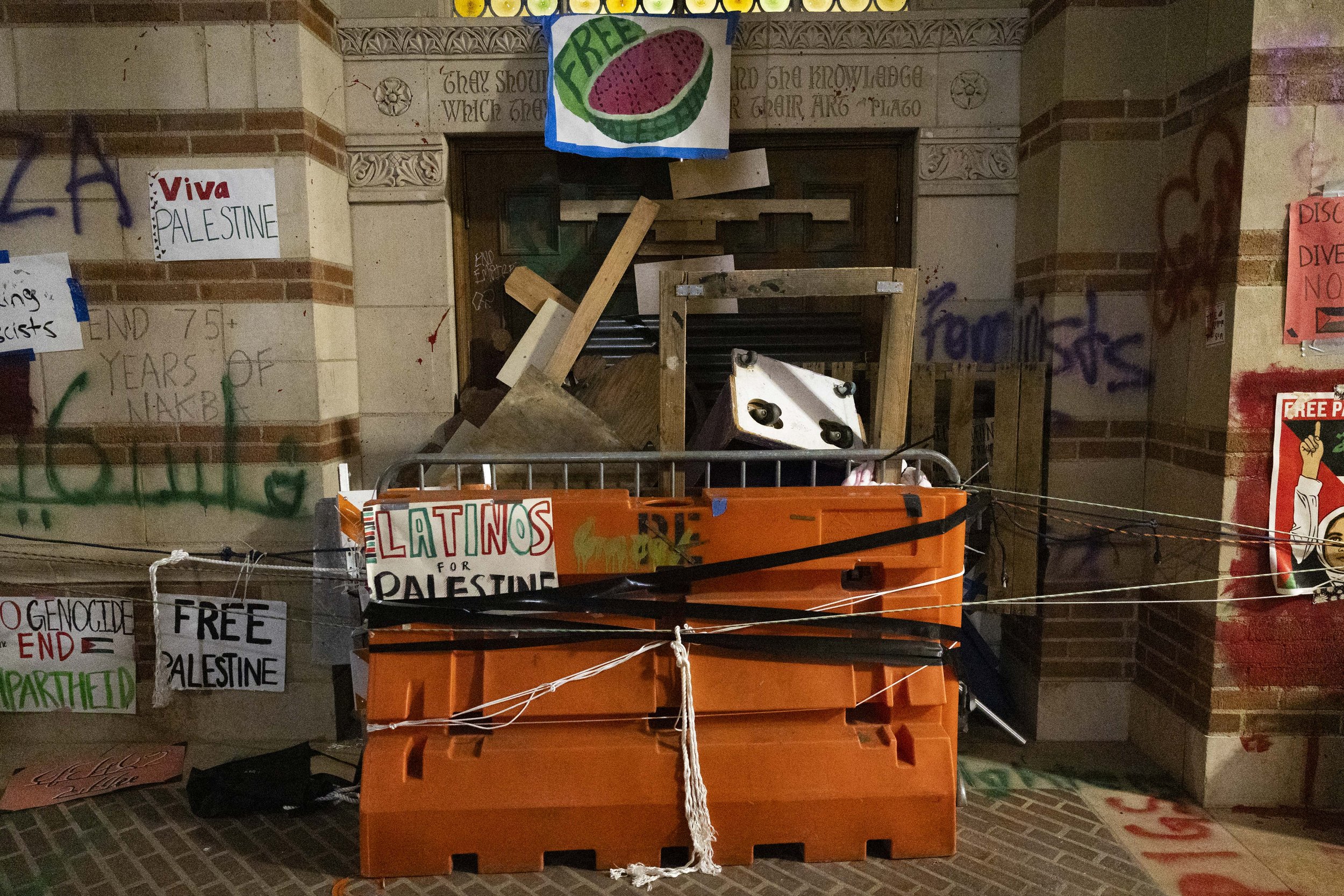
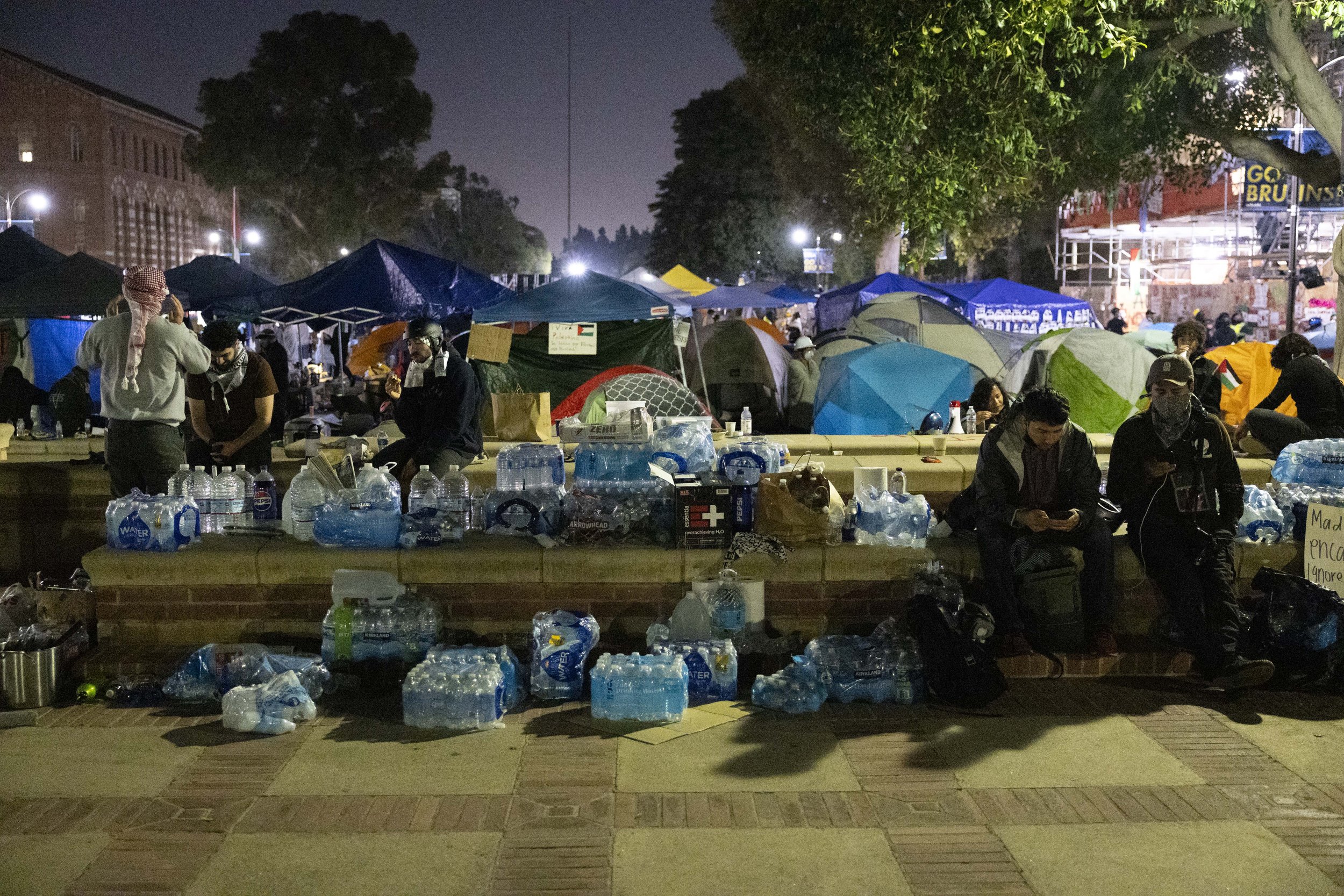
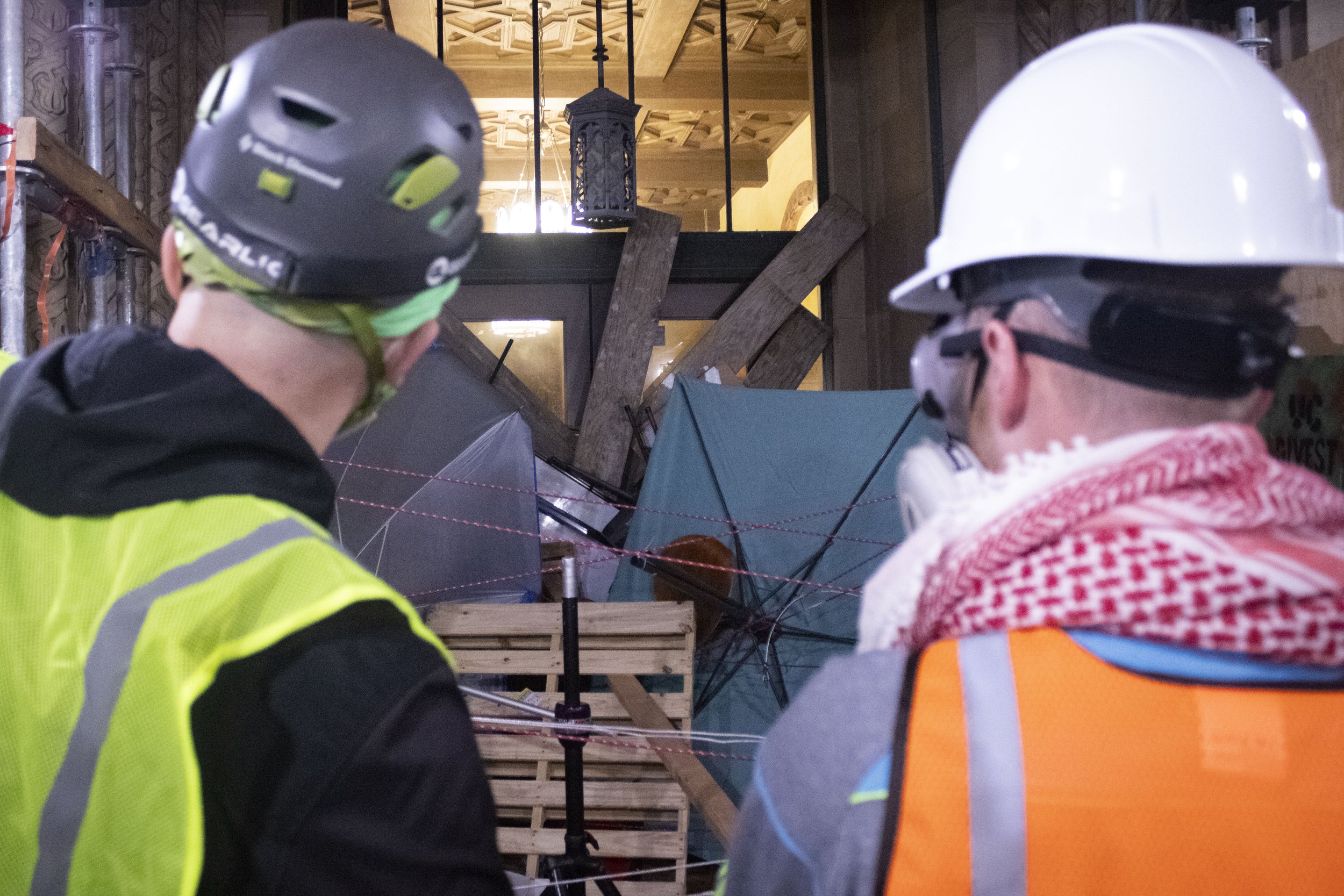
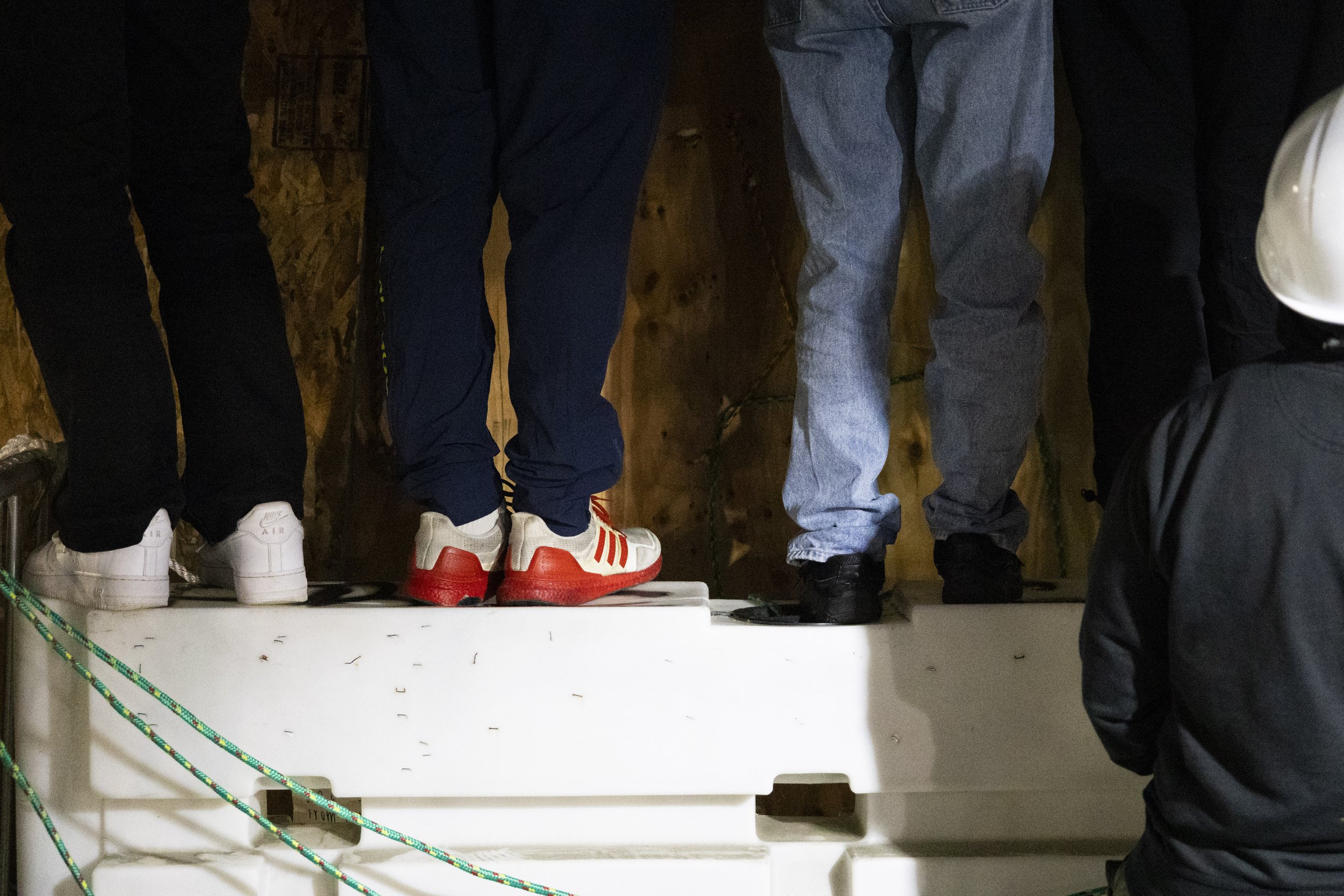
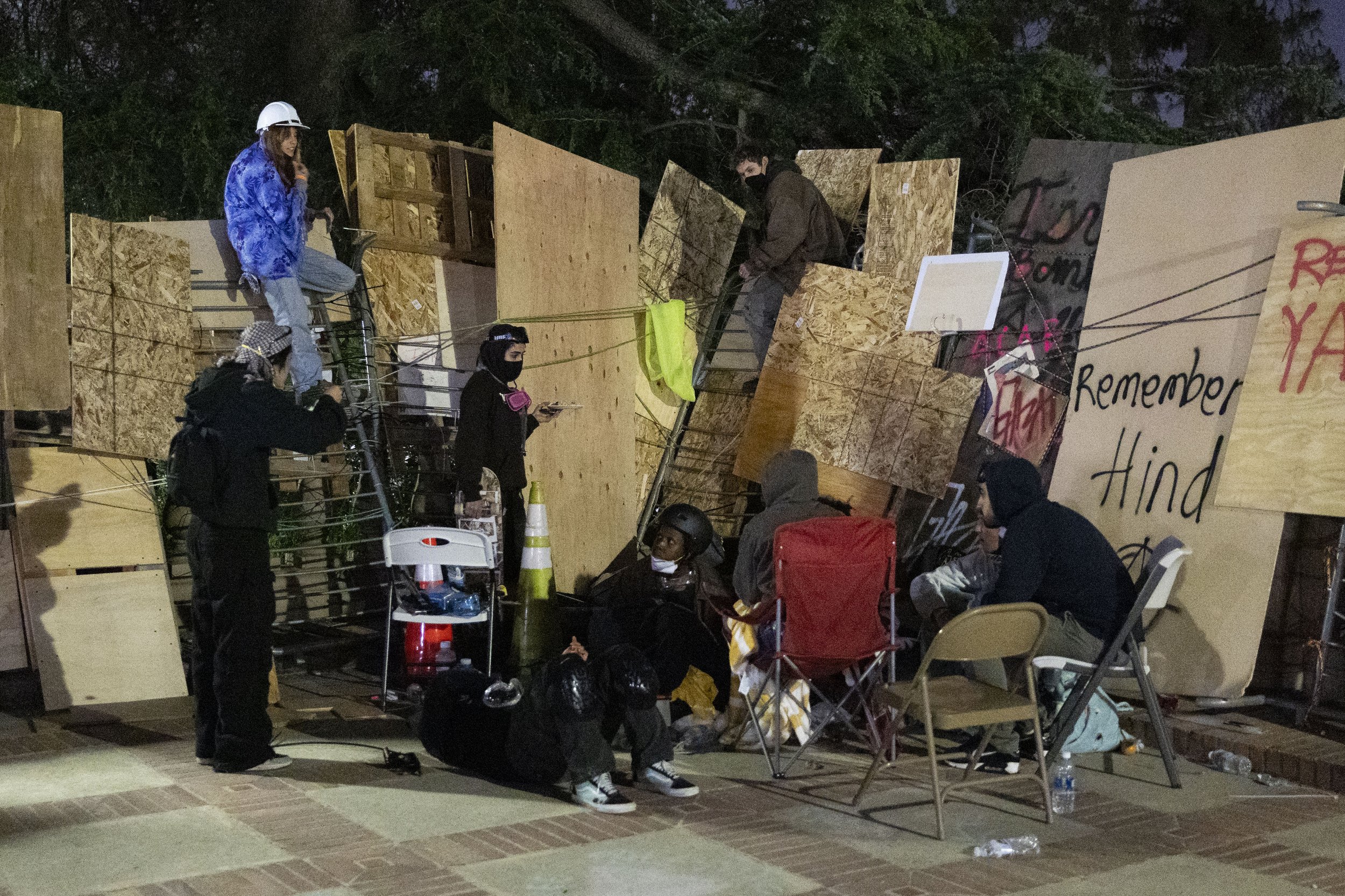
Throughout the day last Wednesday, the student-run pro-Palestine encampment at the University of California, Los Angeles (UCLA) was not allowing media across the barricades. When a camera passed by an entry point, students covered their faces and shouted, “No pictures!”
Outside the walls, students formed assembly lines, organizing boxes of supplies brought by students and community members and passing them up the narrow northwest staircase leading to Royce hall.
After the police disbursement order Wednesday evening, students navigating who came and went from the encampment began allowing a limited number of media outlets to enter. The Corsair was among the dozen or so media outlets that made it inside before the fence was chained shut.
As each person crossed the perimeter, they were told to be prepared to be arrested because UCLA had declared the encampment “unlawful.” Police stated anyone gathered on the property would be subject to arrest.
Up these narrow stairs, a scene from a type of apocalyptic film lay amongst the grass of Dickson Plaza. Upon entry, the walls of Royce Hall towered to the left, and a quad packed tightly with tents to the right.
The brown and beige bricks of the building were painted with pro-Palestine graffiti, and each door was barricaded with metal fences, roadblocks, boards, and other miscellaneous objects bungee chorded together. Even the floors were marked with words such as “HELP GAZA.”
Sprawled amongst the quad were not only tents for protesters to sleep in but also a designated medical tent, lookout tents, a charging station, lost and found, and makeshift hand washing stations in various locations. Equipment was laid out and organized inside the medical tent atop folding tables, and cot-like benches covered in blue tarps lay beside the tables.
On a blue tent near the library, they hung pictures of children who had been murdered in Gaza along with their ages and descriptions, reminding those inside of their cause.
Dickson Plaza looked like a makeshift military base.
Students, faculty, and other protestors milled about the maze of tents, some lounging on the grass, others gathering supplies. Most demonstrators donned swimming goggles, face masks, hard hats, and other protective gear. Medical students were marked with duct-taped crosses on their helmets and vests to signify who they were.
Everyone had a designated role and stood united for one cause.
“UC Divest!” read a banner on the ground beneath Royce Hall.
Weaving in and out of the protesters were those wearing yellow vests, which they called “marshals.” These individuals had megaphones and were reminding those in the encampment to sleep, stay calm, and remain peaceful. Anytime a group became agitated, a marshal was close behind to mediate the situation.
The marshals seemed to be in close communication about what was happening beyond the barricades.
While there was a sense of organization before the raid, one student said, “This is nowhere near as organized as last night,” referring to what the camp’s state was before the violent counter-protest attack Tuesday night against the pro-Palestine supporters.
At 12:30 a.m. Thursday morning, a pre-recorded announcement played out over the speakers of Royce Hall. UCLA Police Captain Gawin Gibson's voice announced that those camped out on Dickson Plaza were in violation of Section 409 of the penal code. Gibson stated that if protesters did not disperse immediately, they would be subject to arrest and/or police action that could cause serious injury.
That recording then began to play repeatedly for the next five hours, echoing between the two buildings. Each time, the protestors shouted and booed.
When asked shortly after the announcement if they were nervous about the threat of being arrested, two UCLA students linked arms and said, “We’re just staying together.”
Students then rallied in front of the western barricade of the encampment, peaking between holes in the wall and peaking over the top. Groups stapled bungee cords as makeshift straps on boards, creating shields. It was as if they were preparing for war.
Marshals continued walking around, reminding students to relax and sleep, saying, “There’s no imminent threats. Get some rest.”
But only minutes later, a little before 1:30 a.m., a loud boom sounded from the eastern side.
Students ran towards where the flash-bang grenade had exploded, and seemingly out of nowhere, a line of around 20 officers who had torn down the barricade stood atop Janss Steps in riot gear.
Protesters formed a line in solidarity and began shouting, “Shame on you,” and asking the officers where they were last night, referring to the counter-protester attack, which resulted in many injured UCLA students and faculty after nearly three hours of no police intervention.
All the while, yellow vests stood between the protesters and the officers with arms stretched out, reminding everyone to stay peaceful and pleading to the officers to keep back.
The officers stood stoic, one with a smile on his face, as they stared over the crowd holding batons and green rubber bullet guns. After thirty minutes, the students grew impatient and started marching forward, arms linked.
Officers began backing up, as if told to avoid the use of physical force, and eventually were pushed back down Janss stairs, where they had come from.
The crowd cheered, hugged, high-fived, and celebrated their victory. The camaraderie was apparent, and the victory boosted the exhausted campers’ morale.
But two hours after securing the perimeter, the police breached on the eastern side. This time, those inside the encampment would not win.
Over the next couple of hours, police pushed further and further inside the UCLA encampment as they shot fireworks over the encampment. While many protestors remained peaceful, chanting and standing alongside their peers, agitators stood near the front, throwing boards, water bottles, pieces of the broken barricade, and other nearby objects at officers.
A few cornered members of the press found themselves in the crosshairs and were treated aggressively by those who were hurling objects.
The police did eventually use their rubber bullets sparingly, pointing them towards those throwing items. Students for Justice in Palestine (SPJ) at UCLA reported on X that at least five students were shot in the head, and a Precursory Statement from UCLA Palestine Solidarity Camp read, “Many were rushed to the ER after the bullets connected with heads and hands.”
Members in vests did their best to stop the agitators, insisting that this must remain a peaceful protest. Throughout everything, medical students passed out water, earplugs, and masks to protestors and media alike.
As they inched towards the center of Dickson Plaza, officers dismantled the camp, starting with a sign that read “No Genocide,” then the Palestinian flag, and finally, each tent, including the medical tent, was torn apart.
What remained was complete chaos. The encampment was left looking like a landfill at the center of the prestigious university.
Many students, at that point, followed police orders and dispersed. Others were plucked from the crowd and arrested as their friends reached after them. Some cried, others hugging as police pushed them towards the western barricades.
Protesters began to shout, “Please don’t hurt us. We are students,” in the end, wearing faces of anguish beneath the goggles, scarves, and masks.
A smaller group of protesters remained, holding their ground, and barricaded themselves between the Shapiro Fountain and the Janss Steps.
At this point, a majority of the media evacuated through a break in the fence and the plaza’s cement wall.
Mona, who is a part of the Palestine solidarity encampment and declined to give a last name, explained that despite the violent attack on Tuesday, the protesters at UCLA are lucky to be protesting here rather than facing the violence in Gaza.
“We are in America, and we have access to hospitals,” Mona said. “They’ve been able to receive the treatment they need, and we’re able to get treatment for their injuries, where people on the ground [in Gaza] are unable to… Palestinians are unable to.”
This may be the end of the encampment, but this is not the end for the pro-Palestinian supporters at UCLA. “We will be back, in some capacity, and whatever capacity that is, to continue our demands to the university,” said Mona.



